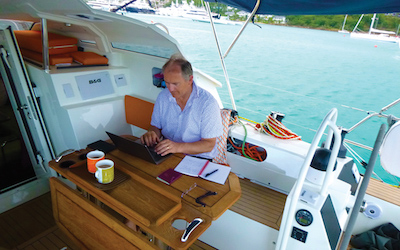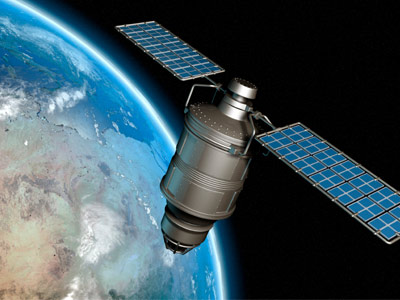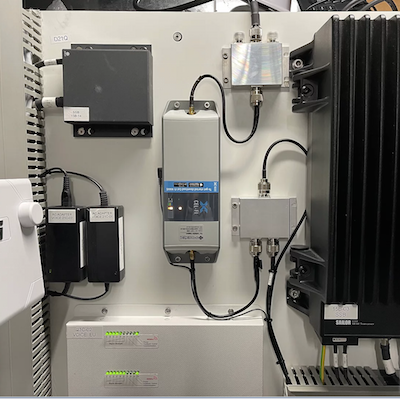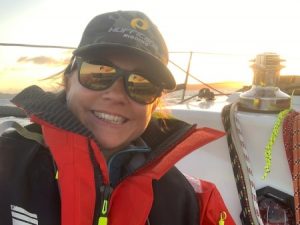INSIGHTS: Setting Up WiFi and the Internet on Board
For many cruisers, the oceans provide an escape from electronic connectivity. However, more and more liveaboards want to be able to work on board with a good internet connection, or simply keep in touch with friends and relatives and have crucial routing and weather information on hand day or night. Regular INSIGHTS contributor Viki Moore provides a guide to getting “connected” on board, produced in association with Nik Thullesen from Global Marine. While both are NZ based, this guide can be applied worldwide.
Published 3 years ago
Sometimes it is nice to be able to get away from the constant emails, Facebook and connectivity that we have in our lives. However, many of us may want to keep in touch and perhaps work on board while sailing, download weather, stream music or videos, or do zoom calls with the family. So, having a good internet connection is something that certainly comes in handy.


- Image (c) Yachting World Magazine
There are three ways you can access the internet from your boat:
- By receiving WiFi a signal from a marina or some nearby open connection.
- By using mobile internet via GSM (2G/3G) or LTE (4G) cellular network.
- By satellite.
1. Accessing Shore/Marina WiFi (free or paid services)
This is an option if you are stationed in the same marina and you’ve got a good signal – i.e. you’re in the right spot. Most marinas offer WiFi connections, however if you are a long way from the source, the coverage can be patchy.
The best way to get a solid onboard connection is to get a dedicated modem/router with either external or window-mounted antennas. There are two types of antennas depending on needs:
- Directional – this is typically a flat panel/box with a plate that is pointed towards the signal source to ‘tune it in’.
- Omni-Directional – this is usually a tubular pole type antenna that doesn’t need to be pointed in any direction. This type of antenna can also be found in dome/mushroom style designs for vehicles and vessel dash mounting.
So, you mount the antenna, add the cable and you can then plug the cable into the modem/router which then transmits a local Wireless Network for your PC and local devices to connect to. In the world of IT and Cell communications it’s often true “You get what you pay for”, but knowing what to get and how to spot a good device is tricky. Devices will often provide text that all seems to do the same, but don’t perform as well.
Note that some marinas have paid internet services, so even if you can connect to the network it may require additional steps to get online. Usually you’ll have to follow a website prompt that shows when trying to go online.
2. Mobile Internet
Once you are out of range of WiFi hotspots, you can switch over to a cell phone data plan. You can typically keep using the same device as for Shore/Marina WiFi to further increase the range of connectivity.
To get boat internet using the cellular systems you should consider the following,
Where are you going?
- Not all countries cellular systems are the same, and do not always allow roaming from all countries. For example, New Caledonia does not allow roaming.
- Get up to speed with where coverage is and isn’t. This may improve your overall experience.
- Don’t expect overseas networks to perform as at home. Often networks are overloaded and back-haul systems are far from optimal.
How much data do I really need?
- An hour surfing Facebook – 100MB – so if you surf Facebook for an hour a day that is 3GB a month.
- Downloading a film – 5GB (about 3GB an hour for HD video).
- General internet browsing – 60-150MB per hour.
What solution is suitable?
Further down in this guide we recommend some devices for various budgets and requirements. Cellular connectivity is usually the best investment all around as a well-designed system will work almost anywhere (giving you can find a SIM card that works in your location!).
3. Satellite WiFi
Once you get out of WiFi and cell phone range, then your only option for internet is Satellite. Satellite internet is a wireless connection with three components – one for the internet service provider, another for the satellite in space, and the final one is attached to your house or boat. There are a number of different options currently available. Ideally satellite internet requires limited movement to maintain the connection – so if there is a strong wind, or rain then you can expect to have a poor signal. The components and data plans at present are quite expensive too.
We are watching very closely what Starlink are doing with their satellite constellation. At present it is just for fixed locations, but they are also promising an option for boats at sea. Hopefully in Q1-2023 we should have more options available from companies such as OneWeb who is also launching low orbit Ka band satellite systems to compete with the Starlink system in the Marine and Commercial space. However, due to the current crisis in Ukraine, the OneWeb satellite launch has been delayed.
The most economical options for satellite data are things like the IridiumGo and Garmin InReach. However these are just for sending basic data and you can’t surf the internet as such. More sophisticated systems require a satellite dish. They start from around $2000 and up to $50,000 and the monthly data costs are substantial too.


Devices & Antennas
There’s an endless number of devices to choose from. However, while most are advertised the same way, may not all perform the same.
A few topics to note when choosing a modem solution:
Antenna
Type, what’s best for your solutions.
- Directional or Omni-directional
Frequency required
- Modern antenna arrays should support the following range 698 MHz to 2700 MHz bands, as well as the new emerging LTE and 5G spectrum for 450MHz and 3.5GHz CBRS bands, which is becoming popular across the various international cellular network operators for LTE
Installation location
- Long cables runs are not only expensive and difficult but can also significantly drop performance of your setup.
- Short, central installation is key to a successful setup.
Modem/Router
Features required:
- Shore/Marina WiFi?
- Most devices of a budget price range won’t have these features available
- CAT-Modem Specification
- CAT1 and 4 are considered “slow” and are often only used on devices which requires minimal data speeds.
- CAT6,11,12 and 20 are considered fast and are often used in high-end devices that have faster processors and more power to serve more devices
Price:
- Don’t always expect the most expensive device to perform the best. Ask a professional if you want the best your budget can afford.
Cables
Length:
- Try to keep cables as short, and as high-quality as possible. Size does matter, and for every meter signal quality is lost.
- Running long cables requires a high-grade cable. Typically, this is graded in the thickness of the core such as “LMR400” or even bigger “LMR600” for very long runs (40m+). These cables usually cost $8-10 per meter.
Type & Notes:
- Never assume all cables does the same because they don’t.
- Grades, size and even sheet type has an effect.
- Never run signal cables next to power cables
Some examples of modems/routers for various budgets:
Budget with all most features, but slower speeds:
- Teltonika RUT360 CAT6 https://teltonika-networks.com/product/rut360/
- RRP $450 incl. GST
- This device can also be remotely monitored for $4 per month via the Teltonika RMS platform – and since the RUT360 had built in GPS you can share your location with other people while you travel (And the box is online).
High-speed with extended features:
- Celerway Fractus V2 CAT12 Fractus (celerway.com)
- RRP $1150 incl. GST
High-speed with portability
- Celerway Go Single GO (celerway.com)
- RRP $1850 incl. GST (Single CAT12 Modem)
- RRP $2300 incl. GST (Dual CAT12 Modem, 2x SIM working together)
This device comes with a built-in battery (up-to 7-Hours on Single, 5-Hours on Dual model). Including a USB-C Input and Output for device charging.
- Full speed, high-end with performance for many devices and network:
- Celerway Stratus Dual Stratus (celerway.com)
- RRP $3450 incl. GST (Dual CAT12 Modem, 2x SIM working together)
Celerway modems come with three years remote monitoring for both troubleshooting and assistance. Peplink modems come with one year remote monitoring for both troubleshooting and assistance.
All these modems can be configured to join a shore/marina Wi-Fi network, but also come with 3/4G Modems for added flexibility and connectivity.
Data Plans
Roaming through NZ can be seamless and relatively inexpensive – however a very limited amount of suppliers in NZ are allowed to issue unlimited data cards.
A few examples of data packages available in NZ and Pacific,
- NZ Roaming Deal – Unlimited Data, Month-2-Month Plan, No cancellation fee or data limit! Stream, surf, Teams/Zoom to the end…!
RRP P/M $172.5 incl. GST - APAC Roaming Deal – 100GB Data at Full Speed, Unlimited data at 1.2mbps, Month-2-Month Plan, No cancellation fee! Enough data to get you going, and keep you connected for weather, emails, Whatsapp and voice calls.
RRP P/M $115 incl. GST
+ $8 per day roaming fee (Incl. GST)
Roaming fee occurs only when modem/device is ON, and counts 24-hours from activation. A full list of roaming countries can be provided on request.
Modem
A modem is a box that connects your network to the internet. A modem modulates and demodulates electrical signals sent through a sim card, phone lines, coaxial cables, or other types of wiring; in other words, it transforms digital information from your computer into analog signals that can transmit over wires, and it can translate incoming analog signals back into digital data that your computer can understand. Most stand-alone modems have just two ports: one that connects to the outside world, and an Ethernet jack that connects to a computer or a router. You are going to need a modem that will take a Sim card. You can purchase local Sim cards in different countries – this can then get plugged in to your modem and switched when you move to a different country. You need a modem that is ‘unlocked’ for more cell phone companies when traveling to different countries.
Router
The router is a key piece of equipment in the whole equation. After pulling the data signal in from your antennas – either WiFi or cellular data, the router will then share the internet signal around all your devices on board and also allow those devices to speak to each other. Some of them have the ability to switch between Wi-Fi and cellular.
Your router’s primary responsibility is to route data between devices and between those devices and the wider Internet. The system of interconnected devices plus the router itself is what is collectively referred to when you talk about a network. Your modem connects to one port on the router—usually (but not always) labelled “Wide Area Network,” or “WAN”—and all of your devices connect to the other ports, or wirelessly over the WiFi standard.
Sometimes the modem and router are combined into the same box but they are different technologies. You need to have both – integrated or not, in order to provide an internet connection to all the devices on your boat. Depending on your vessel size and equipment connected onboard it may be recommended to have a separate Router for the internal network and a dedicated 4G/Wi-Fi modem for internet access (50-Devices and above).


- (c) Global Marine Technology Services
Glossary
It is easy to get confused by all the acronyms when it comes to WiFi terminology. Here are a few of the common ones:
- APN – Access Point Name . The name of a gateway between a mobile cellular network and the Internet. A mobile device must be configured with an APN to determine what type of network connection and service should be provided.
- DHCP – Dynamic Host Configuration Protocol. Put simply, allows multiple users to be connected simultaneously.
- GPRS – General Packet Radio Service . Second generation (2G) digital cellular network.
- GSM – Global System for Mobiles . Third generation (3G) digital cellular network.
- LAN – Local Area Network. A computer network which is limited to a small area.
- LTE – Long-Term Evolution. 4G high-speed mobile network.
- MIMO – Multiple-Input Multiple-Output . These receivers have multiple antennae, resulting in improved link retention and increased data capacity.
- PDN – Packet Data Network. A method of transmitting data so that multiple users can share a single connection.
- VOIP – Voice Over Internet Protocol . Phone calls via the Internet.
- WAN – Wide Area Network . A computer network unlimited in area, such as the internet.
- WCDMA – Wideband Code Division Multiplexing Access . Used with the 3G cellular network.
- WPS Wireless Protected Setup. A button that enables quick connection to WiFi devices.
Viki Moore (Island Cruising NZ) and Nik Rone Thullesen (Global Marine)
………………………………………………………………………………………………………………………………………


Viki Moore:
Based in Christchurch, New Zealand, Viki owns a Young 88 that she enjoys cruising and racing around the South Island. She is the President of The Little Ship Club of Canterbury, founder of Women Who Sail New Zealand and is a Director of Yachting New Zealand. In June 2021 she became the new owner of Island Cruising NZ, which runs rallies all over the South Pacific. She enjoys writing about her sailing adventures on her blog www.astrolabesailing.com.
Read Viki’s other articles for INSIGHTS:
- Checking the Checklist
- Helping your Friends and Family Help You
- Choosing Crew
- Making a Boat Safety Equipment Diagram


Nik is the Founder, Director and System Specialist for Global Marine Technology Services, based in Auckland, New Zealand. He has more than 15 years of experience in providing technology solutions to the marine, defence and super yacht markets
………………………………………………………………………………………………………………………………………
Other INSIGHTS can be found here.
Global Marine Technology Services Ltd – partners for this article – can assist in setting you up for your next trip.
Reprinted with kind permission from Island Cruising NZ. All prices are quoted in NZ$.
………………………………………………………………………………………………………………………………………
The opinions expressed in this article are the author’s own and do not reflect the view of Noonsite.com or World Cruising Club.
Related to the following Cruising Resources: Communications, Communications Equipment, Cruising Information, Insights, Internet on Board, Planning and Preparation





